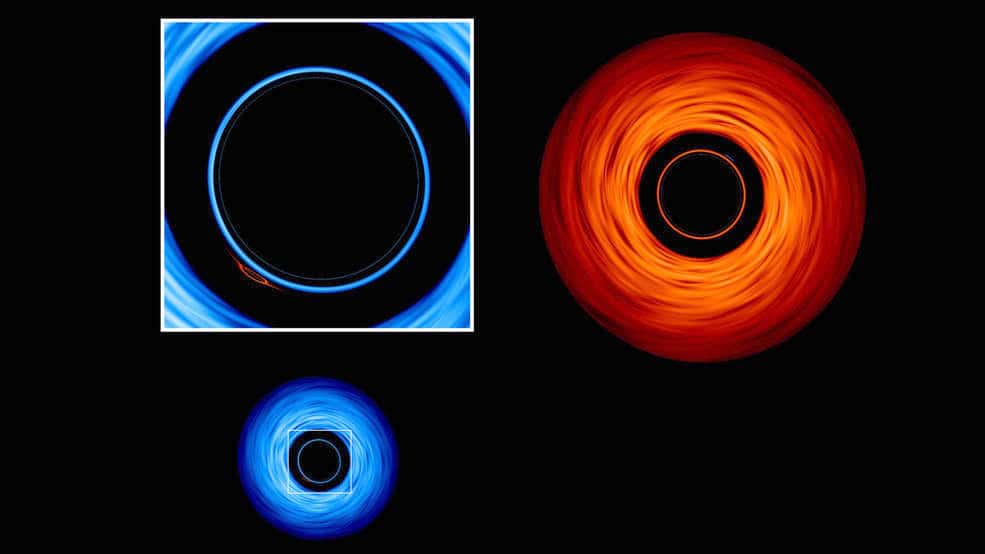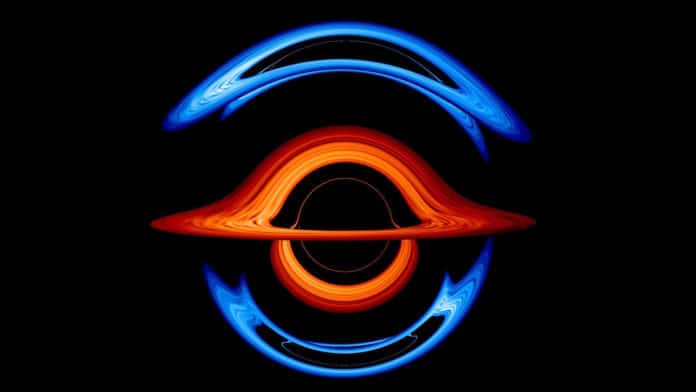A new NASA visualization traces how the black holes distort and redirect light emanating from an accretion disk. It shows a hypnotic dance of a pair of orbiting black holes. These black holes have mass as same as the millions of times the Sun’s mass.
Among two black holes, a larger one with 200 million solar masses, whereas the smaller black ole weighs half. Both black holes form a binary system, where both could maintain accretion disks lasting millions of years.
Each accretion disk is seen from near the orbital plane, where it takes on a characteristic double-humped look. When one black hole passes in front of the other, the gravity of the foreground black hole transforms its partner into a rapidly changing sequence of arcs.
These distortions work out as light from bot disks explores the tangled fabric of space and time near the black holes.
Because of their two colors: red and blue, it is easy to track the lit sources emanating from the accretion disks. Hotter gas gives off light closer to the blue end of the spectrum, and material orbiting smaller black holes experiences stronger gravitational effects that produce higher temperatures. For these masses, both accretion disks would emit most of their light in the UV, with the blue disk reaching a slightly higher temperature.
When observing these disks from edgewise, it looks brighter from one side. Gravitational distortion alters the paths of light coming from different parts of the disks, producing the warped image. The rapid motion of gas near the black hole modifies the disk’s luminosity through a phenomenon called Doppler boosting.

When observing from above, the features of this binary system disappears, and new features emerge. Both black holes produce small images of their partners that circle them each in orbit.
Close observation unveils that these images are edge-on views. To produce them, light from the black holes must be redirected by 90 degrees, which means we’re observing the black holes from two different perspectives—face-on and edge-on—simultaneously.
Jeremy Schnittman, an astrophysicist at NASA’s Goddard Space Flight Center in Greenbelt, Maryland, said, “A striking aspect of this new visualization is the self-similar nature of the images produced by gravitational lensing. Zooming into each black hole reveals multiple, increasingly distorted images of its partner.”
“The visualization also shows a more subtle phenomenon called relativistic aberration. The black holes appear smaller as they approach the viewer and larger when moving away.”
The visualization was created by computing the path taken by light rays from the accretion disks as they made their way through the warped space-time around the black holes. In collaboration with Goddard data scientist Brian P. Powell, scientists used Discover supercomputer at the NASA Center for Climate Simulation. Using just 2% of Discover’s 129,000 processors, these computations took about a day.
